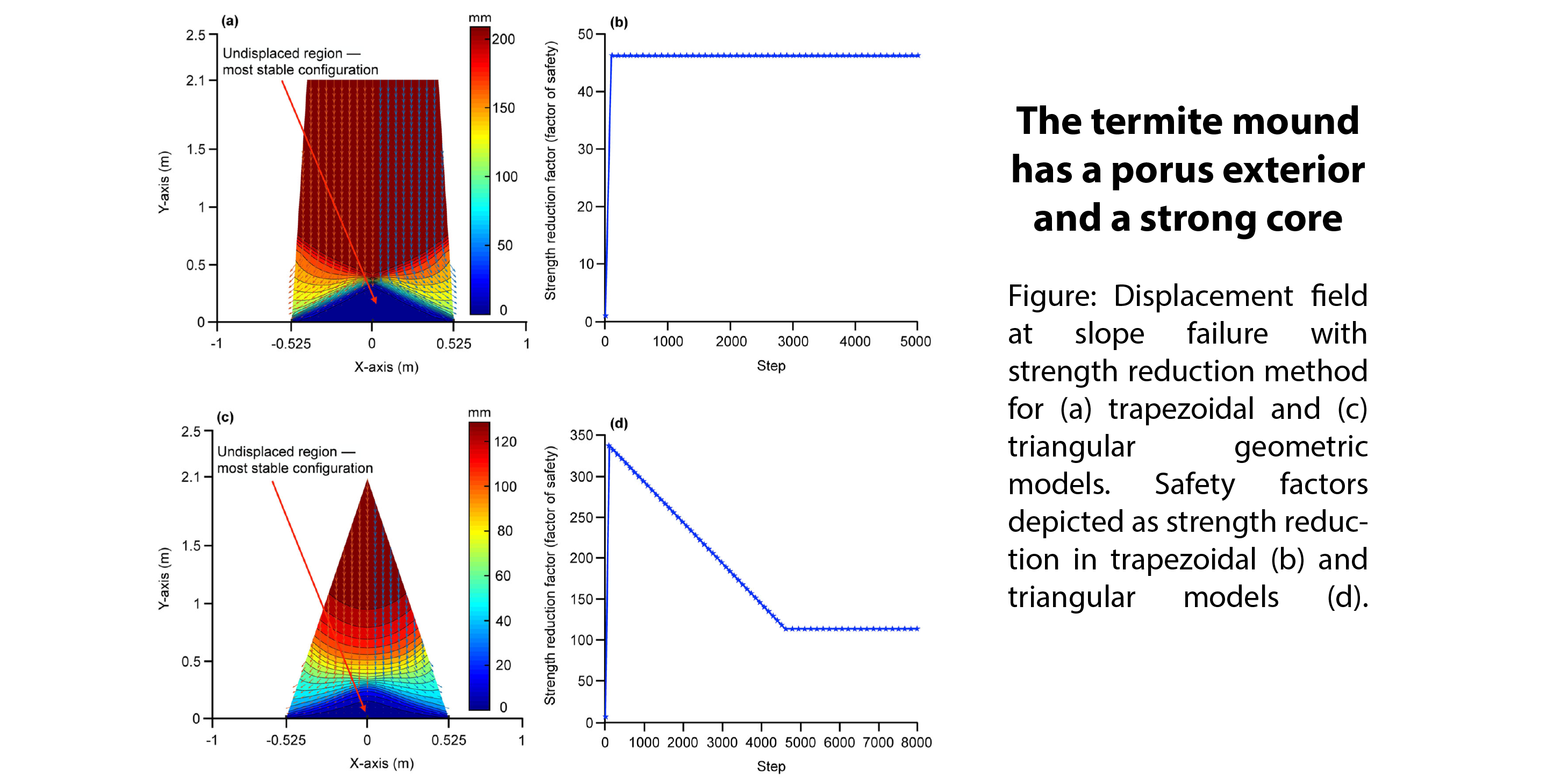New publication: The termite mound has a porous exterior and a strong core
Sat, 2020-08-15 14:22
The termite mound is an iconic example of earthen construction. It is a self-organised structure built by thousands of blind termite workers that build a stable soil structure with extremely high safety factors and resistance to slope failure. Using finite element modeling, tomography, porosity measurements and experimental determination of air permeability, we show that the termite mound is a bilayered structure with a solid core and a porous shell. This bi-layered architecture facilitates the high strength and ventilation required in such a structure that houses thousands of termites, and also serves as an incubator for the growth of fungus that serves as food for the termites.
The termite investigated in this study was the fungus-farming termite Odontotermes obsesus, a common termite in south India.
This paper is an inter-disciplinary collaboration between the Centre for Ecological Sciences (Renee M. Borges and Nikita Zachariah) and the Department of Civil Engineering (Tejas Murthy and Saurabh Singh).
Link to publication: https://www.nature.com/articles/s41598-020-70058-2

Add new comment